On the slopes of Mount Ungaran in the temperate climate of Java’s hilly terrain, perches several small ancient temples amid rose gardens, cabbage fields, and wild taro and coffee trees. The sky is clear, the sun shines brightly. This place is only less than 40 km away from where I was born. But it has taken me 28 years to finally set foot in Gedong Songo – Javanese for ‘nine buildings’ – a temple compound in this cool refuge from the unbearable heat and humidity of Semarang, the capital of Central Java.
Originally studded with nine Hindu temples, hence the name, today only five remain largely intact and excavated. The rest are now merely in ruins. Built in the 8th century out of volcanic stone, the temples are fine examples of the Early Classic style of Javanese architecture. As one of the oldest temples in the island of Java, Gedong Songo pioneered the way for the construction of even more magnificent Javanese temples of Borobudur and Prambanan. The former even inspired King Suryavarman II of the Khmer Kingdom (present-day Cambodia) to build an even larger religious monument, Angkor Wat.
Instead of taking the normal counter-clockwise route from Gedong I to V, Alexander and I opt for the opposite. Snaking uphill on a path under the scorching heat takes its toll. I have to stop every now and again to catch my breath, thanks to the succulent and sumptuous dishes I had the previous day. Occasionally horse-riding visitors pass us by, seemingly indifferent of the calorie-burner path. 10 minutes after we start the hike, we come to an ascending path where the mighty Mount Ungaran stands before our eyes. It is literally like climbing the stairs to heaven.
Not long afterwards, we see the first temple – although technically the last temple in a normal circuit. Dotted with boy and girl scouts seeking a refuge from the sun, Gedong V is located at the highest elevation of all the five temples, standing graciously against the ravine which separates the two main sides of the hills. Gedong III and IV are clearly visible from this vantage point, each perched on a slope of the verdant backdrop.
As the predecessor of the great Javanese temples, Gedong Songo’s decorative elements are quite modest compared to its bigger sisters. However the projecting vestibule and “false linggam” spires on top of its temples are some of the most distinctive features of the structures from the Early Classic period. Each temple has its own distinguishing feature. Gedong I is a lonesome structure compared to the rest of the compound; Gedong II has its kala-makara relief; and Gedong III which consists of several temples depicting Shivaite Hinduism.
Wandering further through the scenic pathway, we notice white clouds hanging over a small temple just north of Gedong IV. Coming closer I realize that it is not a cloud, but rather a gas with a putrid scent. Puffing gently from above the hill, the true power of the fumarole can only be comprehended by walking down the twisting path leading to the earth’s showcase of power. Right next to the small crack where the sulphurous gas escapes to the atmosphere, lichens cover the volcanic stones, flourishing despite the heat a few meters away.
It is probably the same energy that brought people to this rugged terrain and erect these venerated temples. Because this is Java, the land where mysticism is the norm amid the shadows of its towering volcanoes.

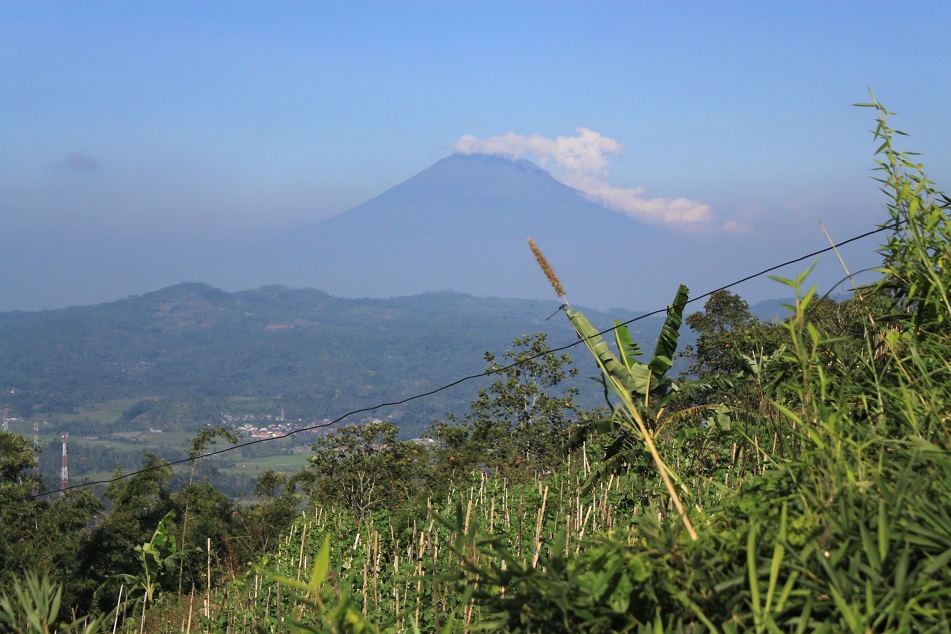

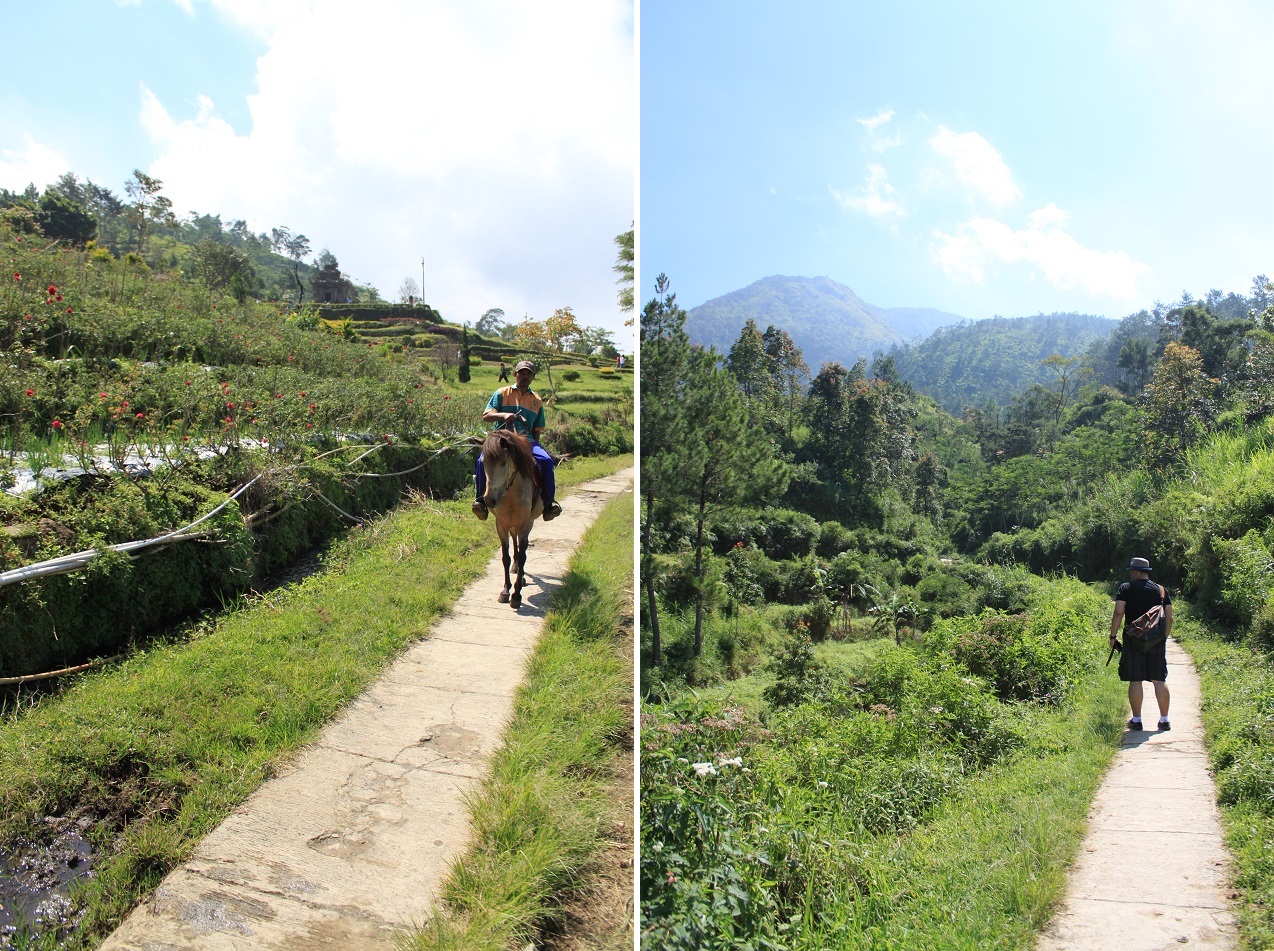
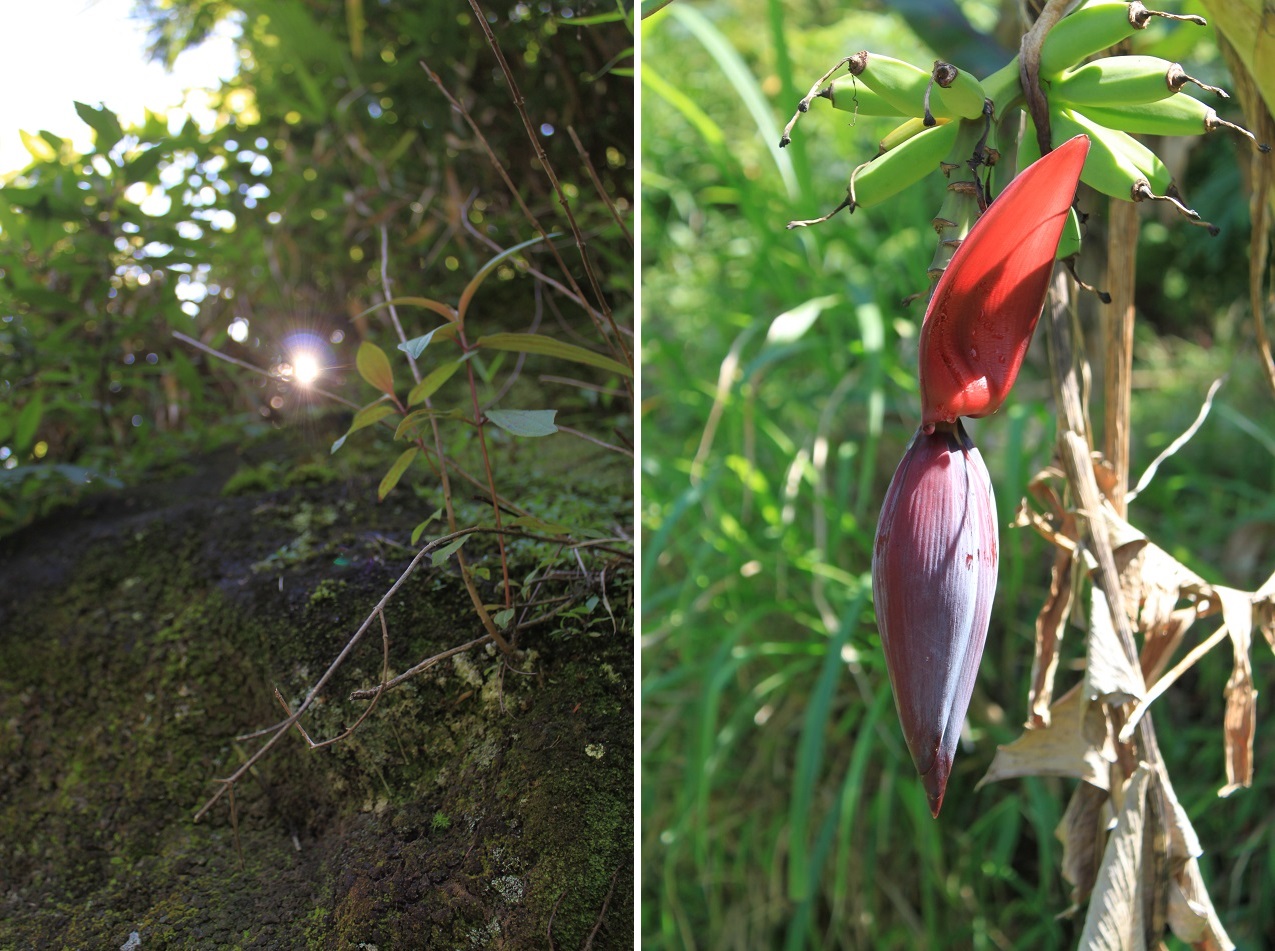
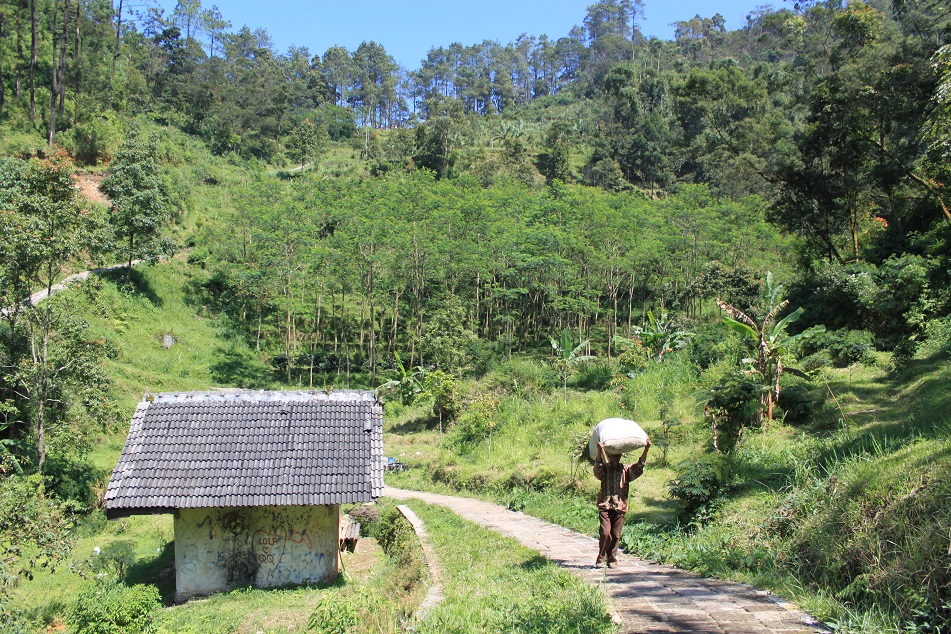
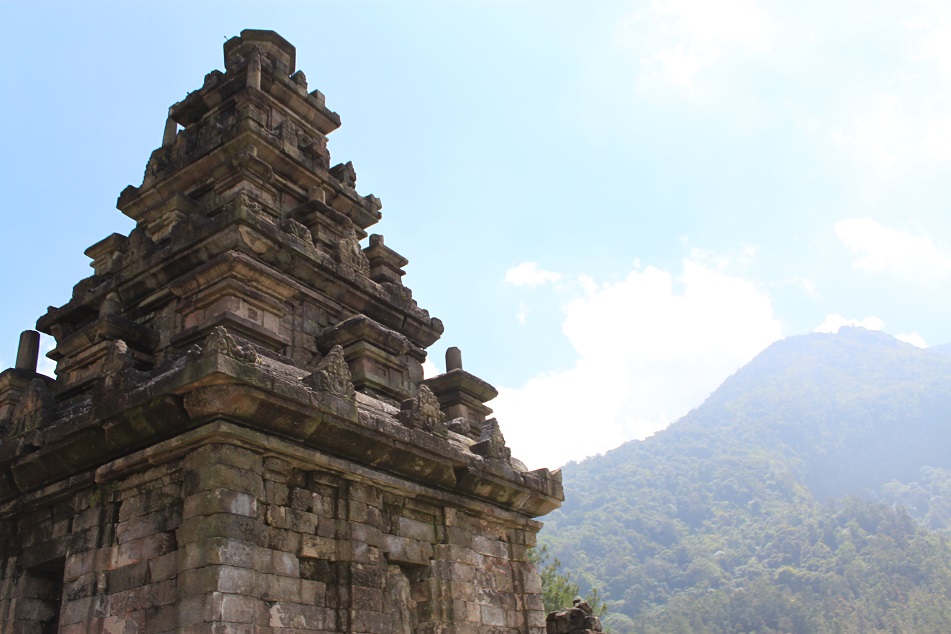
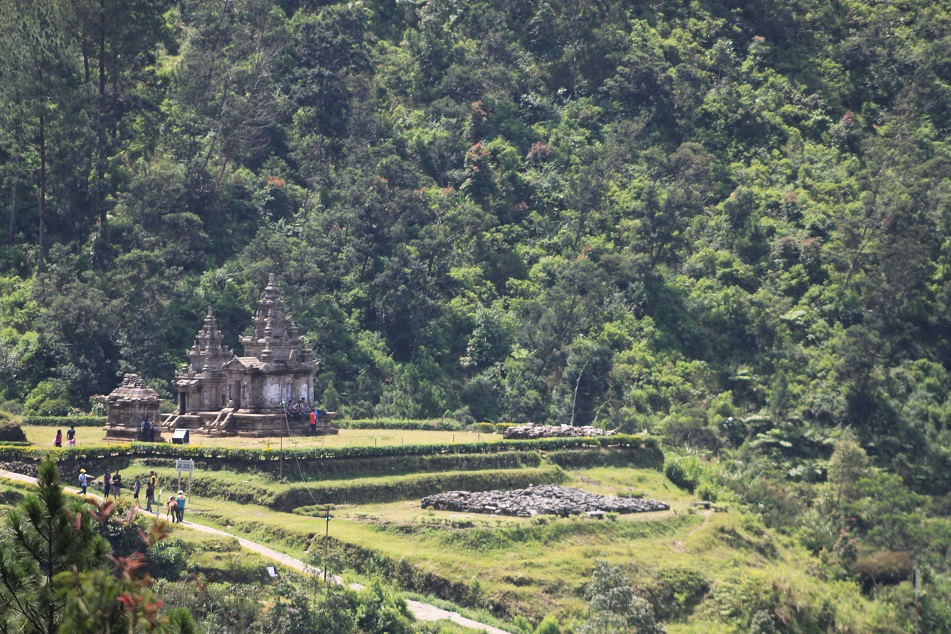
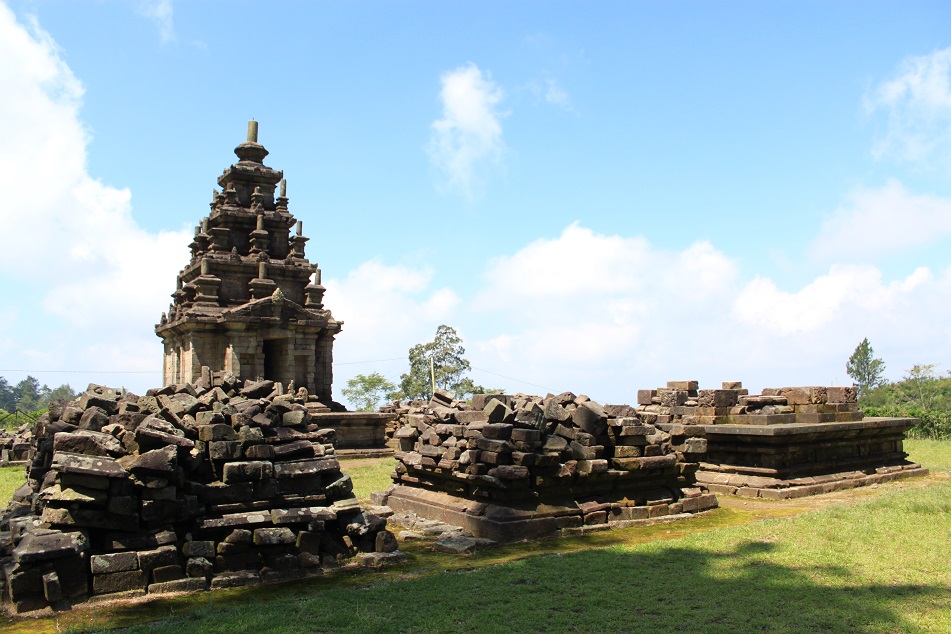
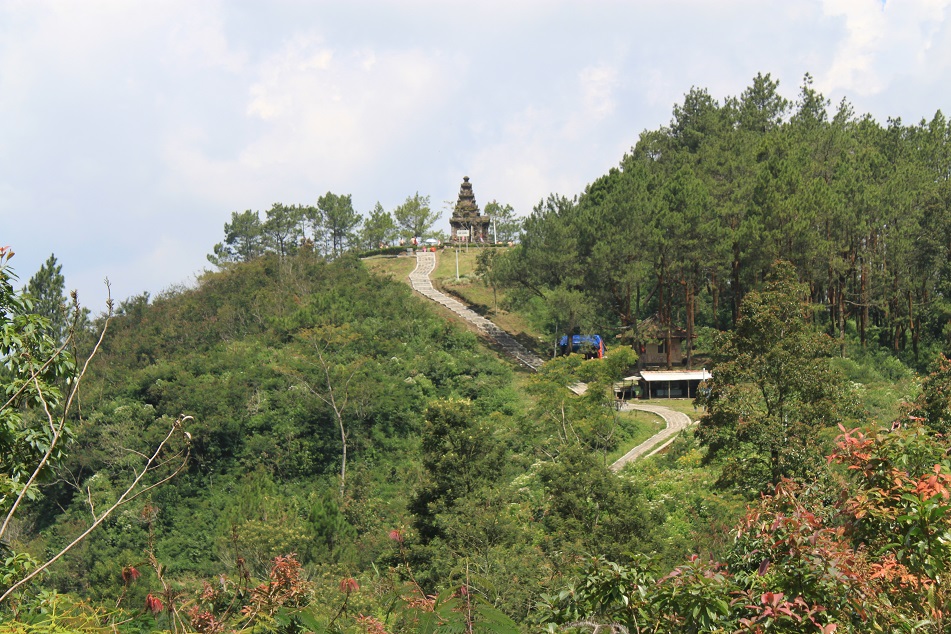
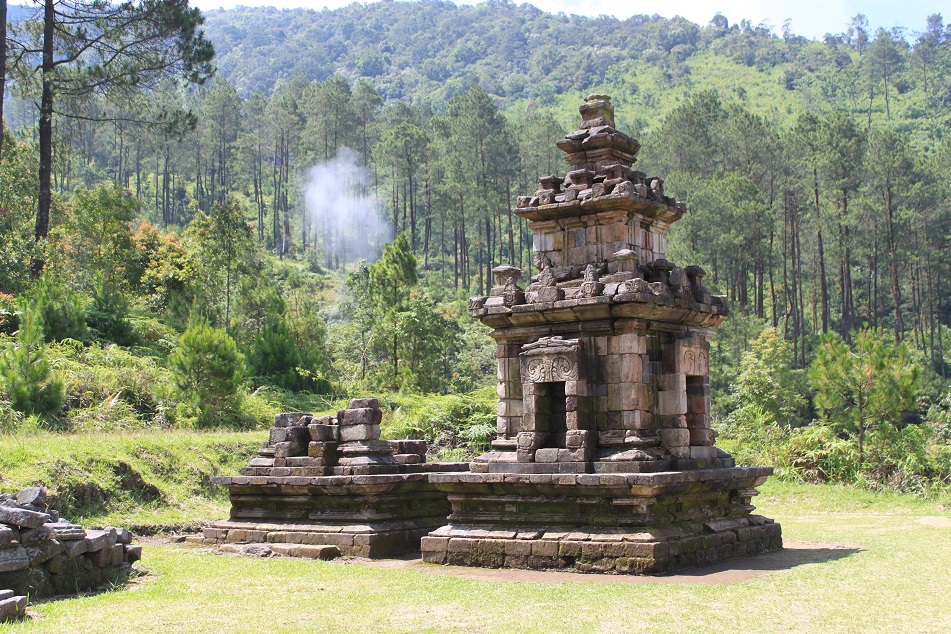
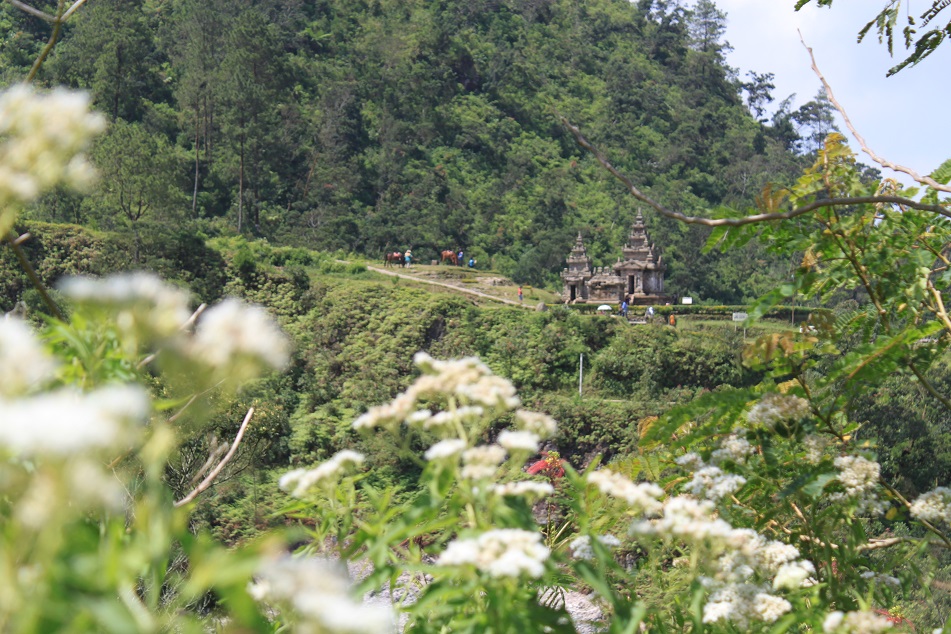
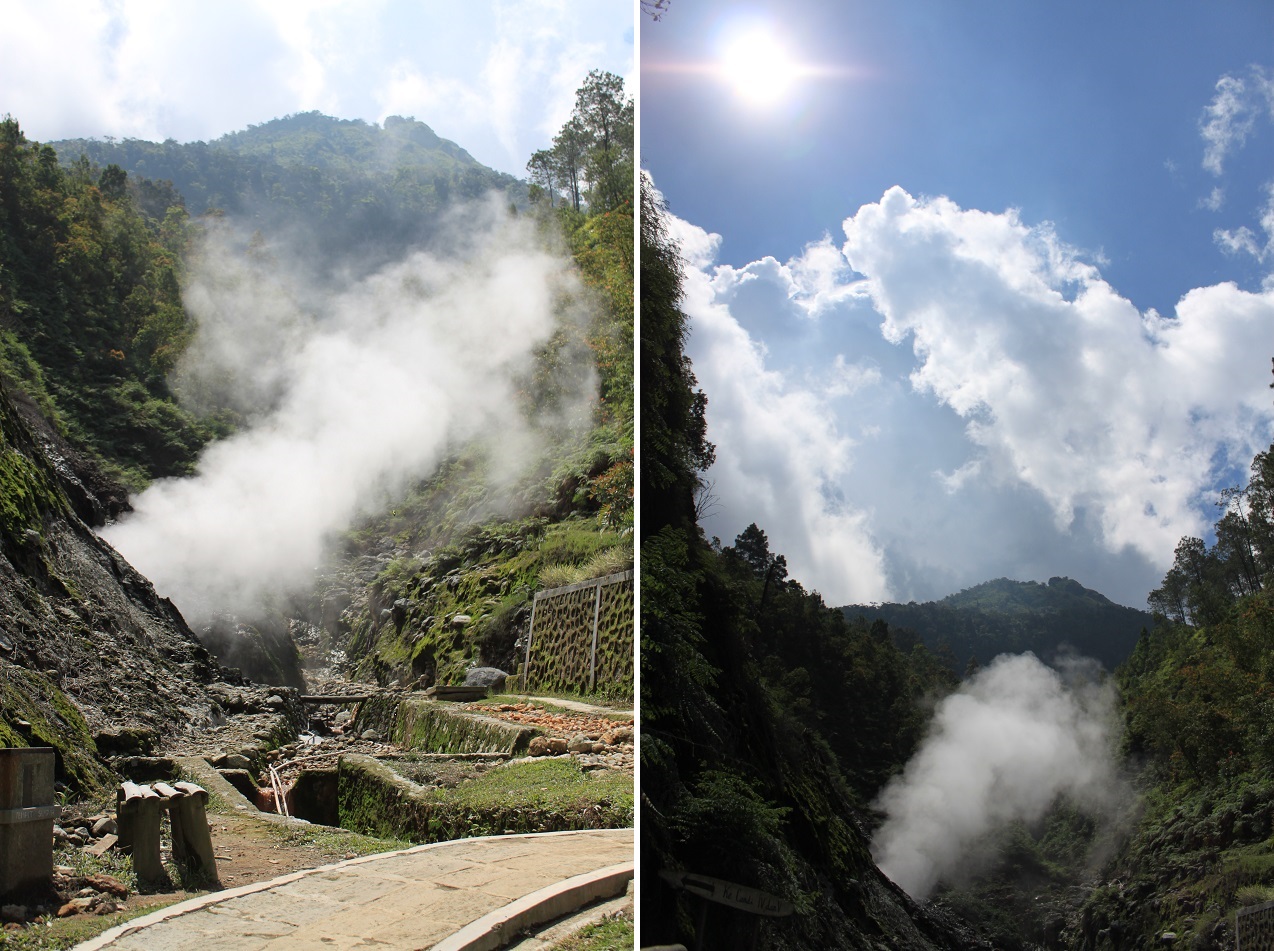
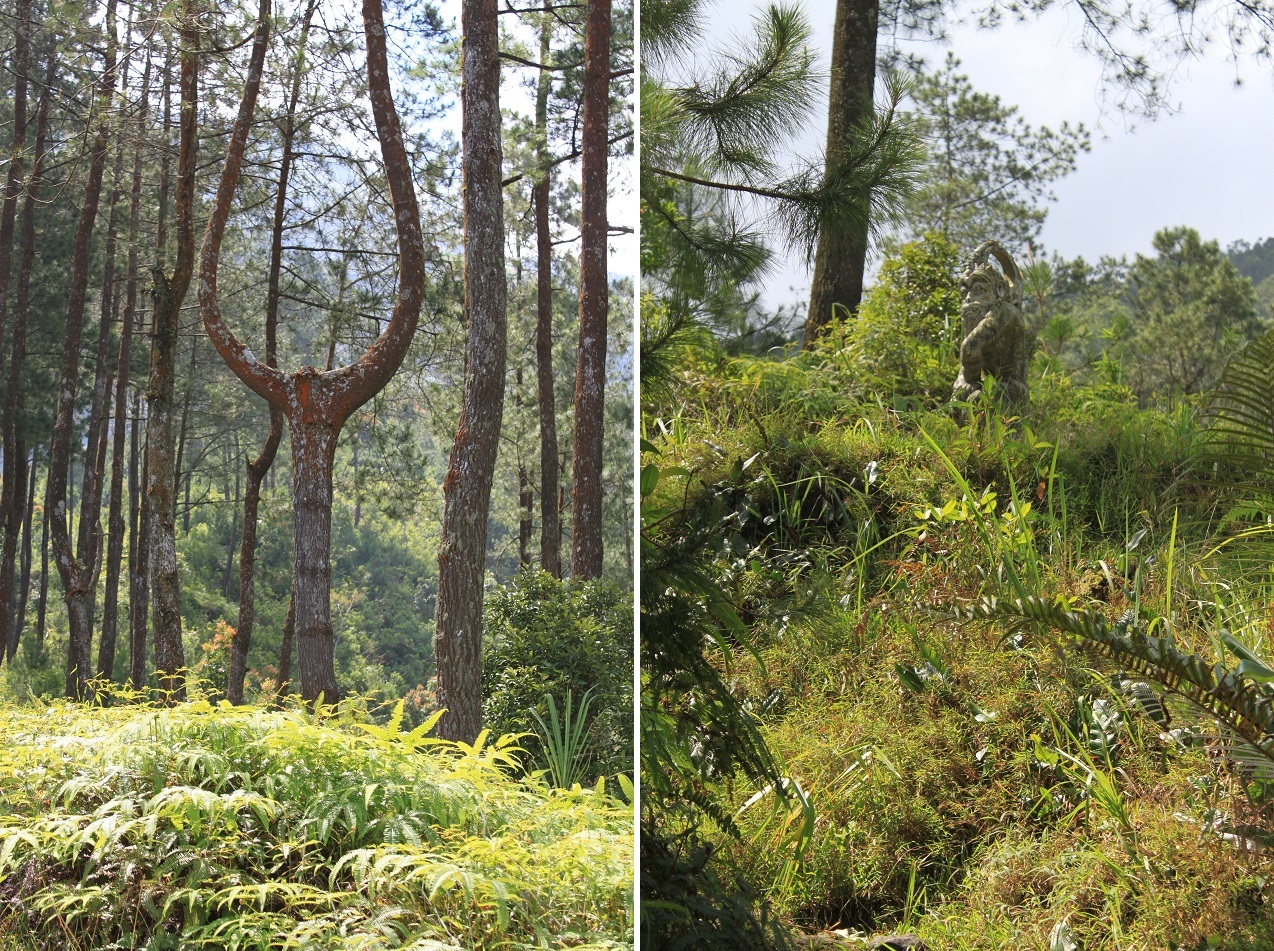

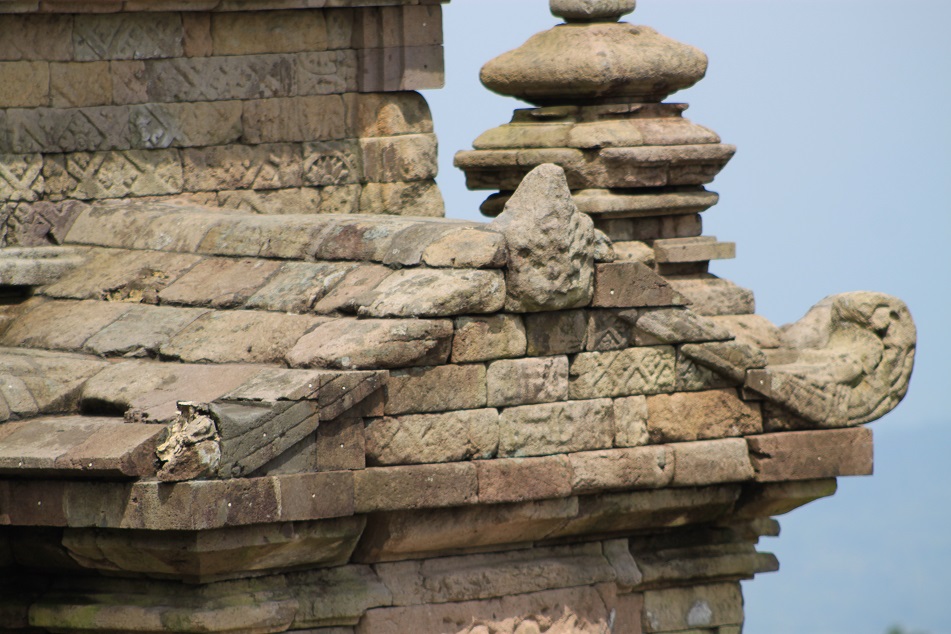
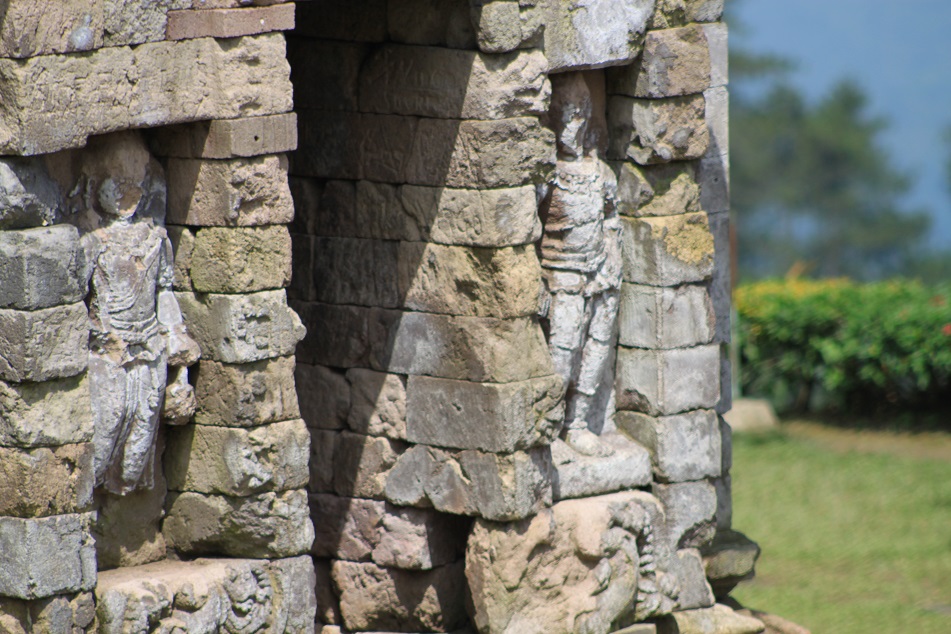
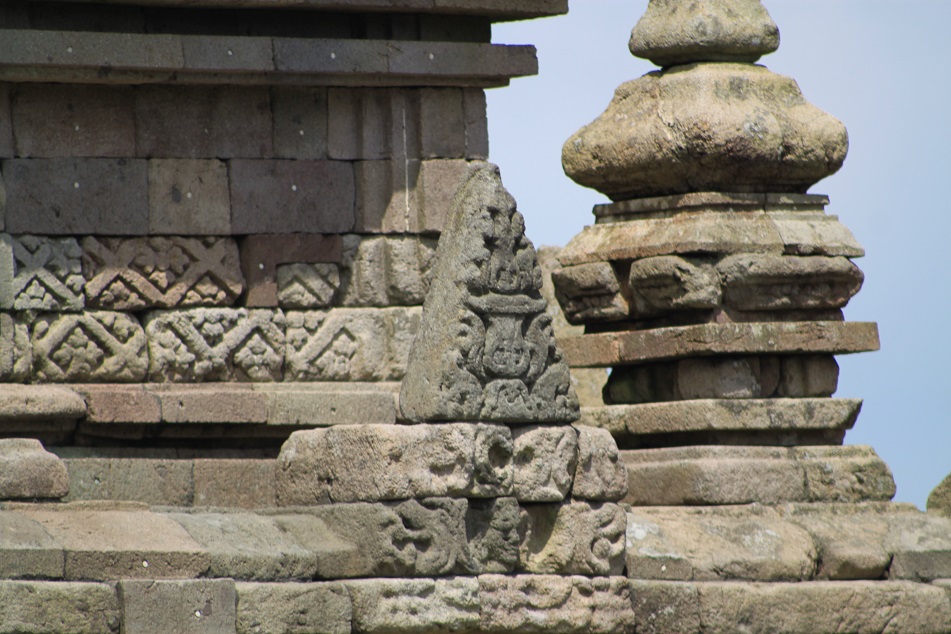
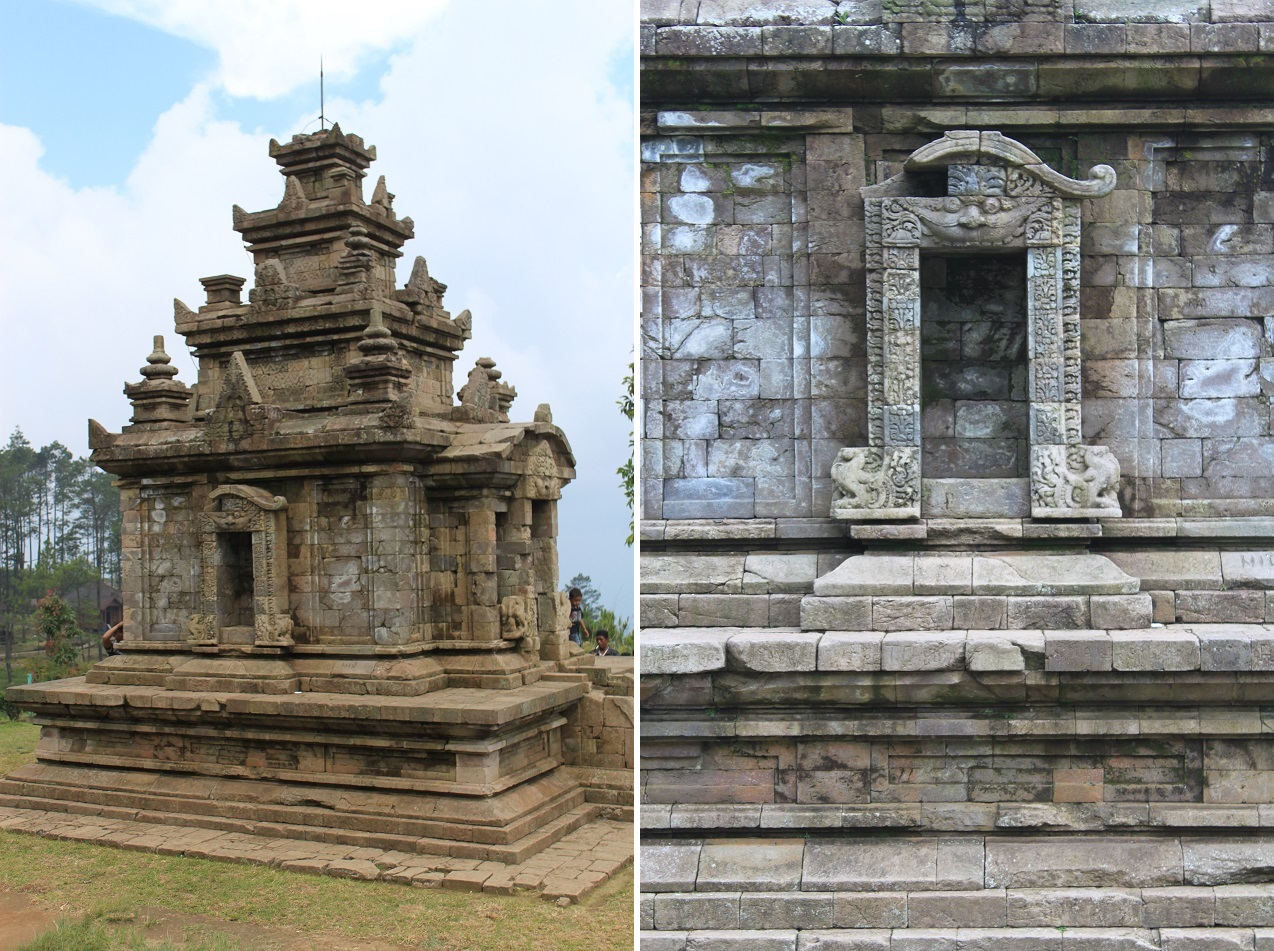
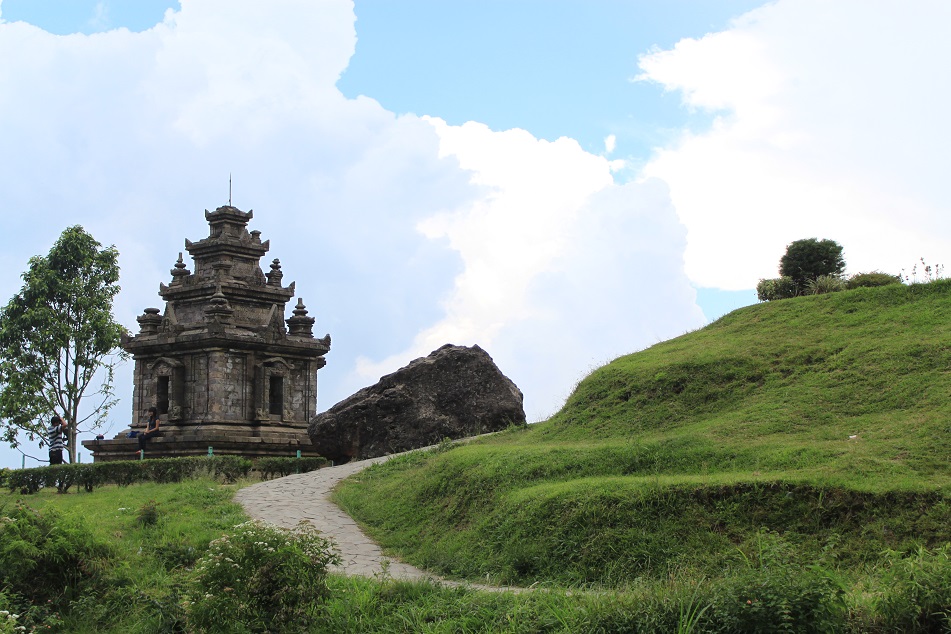
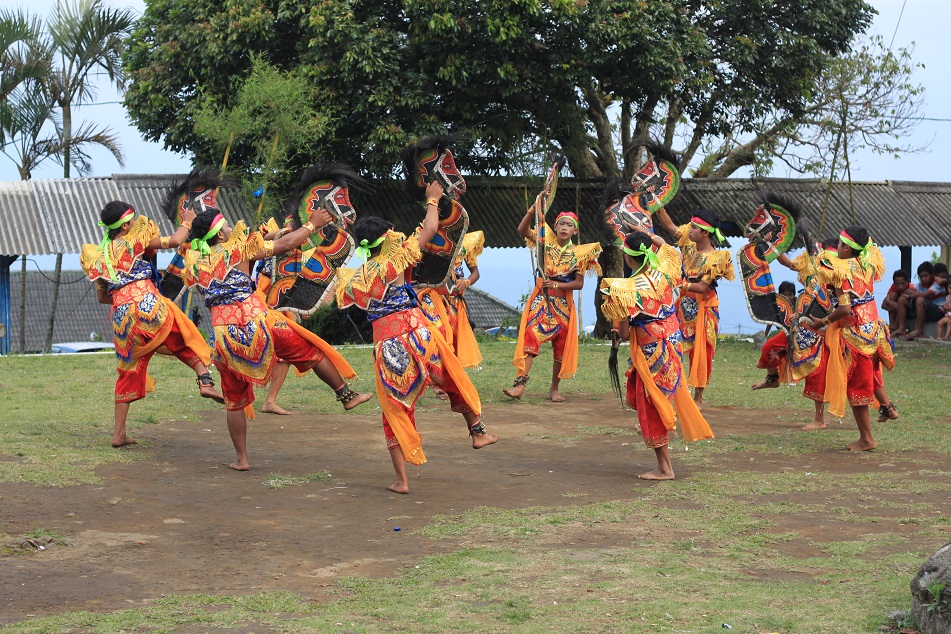
From what I’ve seen, it looks like Gedong III is the most photographed of the nine temples. You went on a beautiful day – they seem so secluded and well off the tourist trail. I especially love the shots of Merbabu and Sindoro rising out of the haze – it must be perfect for watching the sunrise or sunset. Thanks for sharing, Bama!
LikeLike
Yes, it is. It’s also often featured in various TV commercials, including the Dutch version of Garuda’s TV ad. I know you would love those shots of Merbabu and Sindoro. After all, you’ve always been attracted to volcanoes. 🙂 It was indeed a nice sunny day, but I was too ignorant to put some sunscreen prior to exploring the temples. Hence the sunburns.
LikeLike
Reblogged this on fiverrearn.
LikeLike
Reblogged this on GoStepAway and commented:
There are so many beautiful places in Indonesia. The history of it also have its own greatness.
LikeLike
Hi Bama, I thoroughly enjoyed this post. I have not heard about the Gedong Temples. What a treasure. The temples look exquisite but most of all, the location is so bucolic, so spectacular and looks so tranquil. The ancient Javanese knew how to pick the location for their temples well. Thanks for the introduction to Gedong. Hope to get there one day.
LikeLike
Thanks Marisol! Many people go to Borobudur or Prambanan in the south instead. Even I myself had always been skipping this place before. 🙂 The Javanese are known for their strong connection to the nature and ancestors’ spirit. This has endured the periods of Buddhism, Hinduism, and even Islam. I hope when you do go there, it’ll be a nice day with blue skies. 🙂
LikeLike
Oh, Bama, what a trip it must have been – back in time into that – as you say – bucolic countryside, dotted with temples and just reeking of mystery and power. Glorious. Sorry about the sunburn 🙂
LikeLike
It was surprisingly much less crowded that I anticipated. Hence the tranquil and laidback atmosphere. I can imagine how it would feel exploring this place really early in the morning when daily activities start. Thanks Meredith, I got it under control. 🙂
LikeLike
It is beautiful, isn’t it Mase? And not far at all from your home-town. 🙂 I did enjoy the fresh air and the trekking itself. No more walking-stick. 🙂
LikeLike
It was, indeed. And it’s nice to see you without your walking stick. 🙂
LikeLike
As always, you managed to present a beautiful pictures as well as the story about it. I think I’ll go to visit gedong songo someday. Thanks for sharing!
LikeLike
Thank you for your encouragement! I myself need to explore more places in Central Java though, because there are much more than just Borobudur and Prambanan.
LikeLike
A reblogué ceci sur invitango.
LikeLike
Reblogged this on Voices and Visions.
LikeLike
Hi Bama!
This is my hometown, when I was 5 years old my parents took me to this place for the first time.
Thanks for your visit. 🙂
LikeLike
Hi Eva! I always call Semarang my hometown as well, even though I never really live there. My parents live in Semarang now so I visit the city regularly.
LikeLike
Oh wow! I lived there for about 20 years before moved to Jakarta. But my parents still in Ungaran, so it still my hometown. Salam kenal ya, saya suka blog anda. 🙂
LikeLike
Looks gorgeous and definitely worth the visit!
LikeLike
It was indeed worth a visit and a nice getaway from the heat of Semarang.
LikeLike
I love the way you describe the story. I enjoy reading your post Bama. I think the picture of “Gedong III’s Statues” is amazing 🙂
LikeLike
Thank you so much Adie! I was lucky that the weather was nice during my visit. 🙂
LikeLike
Haduuh, mata fotografer memang beda ya ^_^
LikeLike
Aduh, saya itu bukan fotografer lho. 🙂 Saya masih belajar terus kok ke kenalan atau lewat internet. Sisanya pake feeling. 😛
LikeLike
Like your pictures, Bama… You shoot the pictures with different tastes 🙂
LikeLike
Thanks Halim! I tried to capture the temples from different angels. 🙂
LikeLike
What a stunningly beautiful place Bama! Love the long shots across the ravine. Haven’t seen or heard of a lingam spire quite like that anywhere in India! Wonder if that ‘peculiar thing’ is a trident (Shiva’s weapon) with one prong missing?
LikeLike
It surprisingly was Madhu! Speaking of the temples in India, I really want to go to Airavatesvara Temple because of its intricate wheel ornaments. I never see such ornament in any other temple, or I could be wrong. That peculiar thing is actually a living breathing tree. It’s the only one which looked like that.
LikeLike
Keren masbro, blm kesampaian nich sampe sini 🙂
LikeLike
Thank you! Gpp, saya aja butuh 28 tahun untuk sampe Gedong Songo. 🙂
LikeLike
Love this post!
LikeLike
Thanks Yelke!
LikeLike
Pingback: Gedong Songo: Prelude to Borobudur | DaLuR HeSTa
Really wonder.seems to be right for seclusion and meditation
LikeLike
Even though this place is not a usual spot for people to meditate, but it actually could be.
LikeLike
Hi Traveller,
I always enchanted by the choice of the words in your description, unusual. How if you do retouch your pictures, (reduce the brightness and adjust the contrast). I’ve ever seen the photo by Yoppie Pieter of Gedong III (across the ravine as yours) with early morning sun shine just fall on it gently, too beauty.
Yours : “Gedong III which consists of three temples dedicated to Shiva, Brahma, and Vishnu”
I am afraid that is not right and too simply. In the main courtyard of the magnificent Candi Lara Jonggrang in Prambanan, consist of Candi Shiva in the middle, Candi Brahma (right of Candi Shiva if we stand in the Candi Shiva looking outside, or South of) and Candi Wisnu (left of Candi Shiva, or North of). Apparently,Three perwara temples facing three main temples. In front of Candi Shiva is Candi Nandi because there is Nandi statue inside (as the vehicle of Shiva) flanked by Surya and Candra. Left and Right of Candi Nandi, it cannot be simplified as Candi to house the vehicle of Brahma (Hamsa) and Vishnu (Garuda) since there is no evidence statue of it or any identified (Now archaeologist called it as Candi A and Candi B). Hindhu Java has a unique architecture and layout in religious buildings (not copy paste the India style). (We can compare with Candi Ijo, Candi Ngempon near Semarang and Candi Arjuna in Dieng or Candi Kimpulan in UII Jogjakarta which all never the same in layout and symbolism).
Back to Candi Gedong III : the main temple (the biggest) is Shiva Temple because of the sculptures found. If we stand in the Main temple looking outside, the niche in the porch projection of our right is Nandishvara, if we turn clockwise (pradaksina), next niche will be Durga (Agastya in Lara Jonggrang), then Ganesha, Agastya (Durga in Lara Jonggrang) and back to niche in porch projection of our left is Mahakala (with Club) . Confirm that the temple is for Shiva. But the perwara temple on right of Shiva Temple was not found the statue of Brahma or things identified, also there are empty niches around the temple (which in Lara Jonggrang, there is no niches or secondary chambers around the temple of Brahma). The Perwara temple in front of the Candi Shiva, there is no Nandi statue found. The temple has similar shape of Candi Semar (also no Nandi) in front of Candi Arjuna (for Shiva) in Dieng Complex, as said the function was to kept the tools for rituals. (See DeGroot,Veronique,2009)
Though, the explanation of Candi Gedong IV will be quite challenging, since the main temple (not obvious in your picture) has two perwaras on the right and two pervaras on the left, one pervara on the back, and three pervaras facing the main temple. And the twin temple as in your picture with White Sulphurous Clouds is also part of Candi Gedong IV complex.
The unique is Candi Gedong I (why no picture?), which has no niche and has platform with low parapet (only small part remains) which the only one in Gedong Songo complex and suspected as Buddhist temple because of it.
Keep Travel, Keep Writing
LikeLike
Thanks for your very detailed comment Sapto. I really appreciate it, and I have made a minor correction on the description of Gedong III as you suggested.
LikeLike
This must have been a real neat journey where there is a lot of climbing mountains or hills. Does anyone ever take care of the place other than tourist guides going by with tourists at all?
Rodney
LikeLike
It was indeed, Rodney. But when I did the trip I was significantly fatter, so I was not in my best shape at all. Actually this place is quite well-managed and there are staff to take care of the temples and its surroundings.
LikeLike